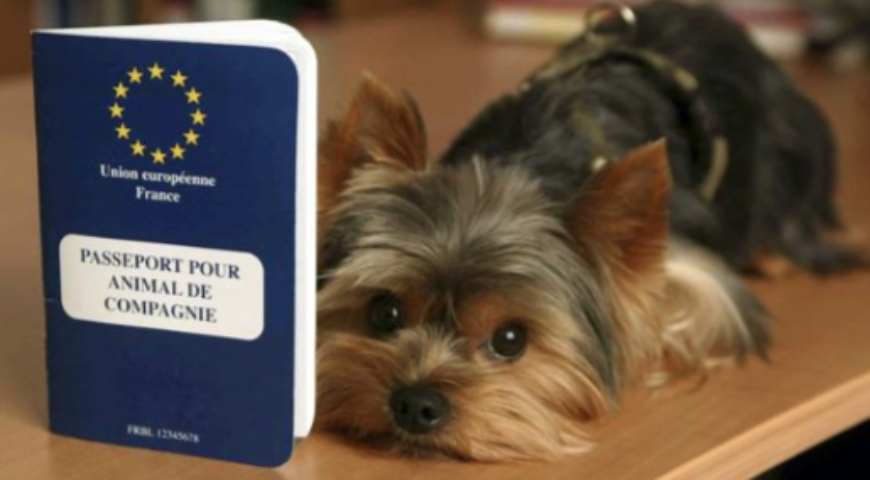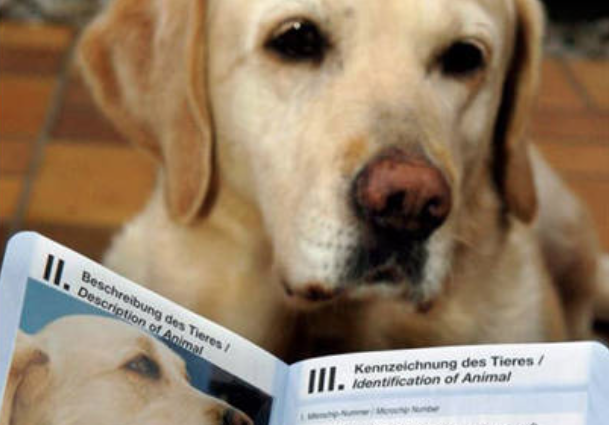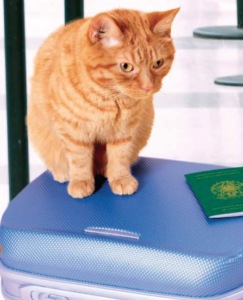
7 tips to fly with your pet
Viviane Vaz for Id International
For different reasons you might need to take your pet along with you on a travel. But do you know how to prepare your pet for a long journey, what to pack and which official procedures to take in order to have a smooth travel with your beloved one? There are so many details that many pet owners still feel lost in this flying mission. So, we prepared a brief list of tips to help you out:
1. Health check
Be aware that many associations around the world advert that flying can be a very stressful experience for the animal. However, if you don’t have any other choice, you should make the best to prepare your pet. Take it to a veterinarian to get a full health check-up. Make sure your pet is fit to travel and its immunizations are in date.
2. Pet passport
Pet immigration laws are specific to each country, so you should check the national procedures with an authorized veterinarian in your country and also with the consulate of the country you are planning to visit. A certificate will show that your pet has taken the right vaccinations and is perfectly fit to travel along with you and other passengers.

European Union resident requirements
Since October 1, 2004, your cat, dog or ferret must have an European passport if you take him/her on a trip. The passport model is the same for all countries that are members of the European Union and is issued at the time of identification of the animal or at the time of vaccination against rabies. In Belgium, since June 7, 2004, dogs automatically receive a passport during their identification procedure. For dogs that were registered before June 7, 2004, your veterinarian can provide the passport.
Moreover, since January 2012 you must administer a specific deworming treatment to your dog if you wish to take him to Finland, Ireland, Malta or the United Kingdom. This treatment should be applied by a veterinarian and must be mentioned on the pet passport. Your departure can be made between one and five days after this treatment.
Be also aware that from July 3, 2011, a pet microchip is mandatory for all trips in Europe (tattoo valid as long as it is clearly legible and was placed before 3/7/2011)
3. Choosing the airline
The air companies have their own rules for flying with animals. You should double check with them to well organize it. In Europe, for example, Air France and Portuguese TAP accepts some small pets in the aircraft cabin and in the aircraft hold. Brussels Airlines take dogs and cats in the aircraft cabin, except in flights to the United Kingdom. Birds, fish, rabbits and rodents (pigs, hamsters, etc.) may only be transported as cargo. The same for Iberia, that does not permit the transport of weasels (ferrets, pine martens, etc.). On the other hand, Alitalia, will take also your ferret in the aircraft cabin and in the aircraft hold. Icelandair do not take pets in the cabin, but they count on a specially climate controlled transport area in the cargo area of the aircraft. Among the most pet-friendly companies is Virgin Atlantic, which presents even a “Flying Paws plan” with a reward scheme!
 4. Find a comfy & suitable transport bag
4. Find a comfy & suitable transport bag
Do make sure your pet is comfortable and familiar with the bag before travel. Try to purchase the best size for your dog according to the rules of the air company. Remember to double check the measures and bag material allowed.
5. Pee & poo marathon preparation
You need to prepare your pet beforehand for this long journey and get used to the transport bag. On the day of departure, take it easy on food and water. You can also help your dog to “empty” his bladder before traveling. You should also feed it with a light meal at least six hours before flying. Last, but not least, purchase some special pads to be placed underneath the pet carrier. It’s made to absorb all wetness and keep pets completely comfortable and dry.
6. Get your pet tired the day before
If your puppy is tired, it might sleep during the day or night of traveling. So, help your pet to get his energy out before he embarks in this adventure.
7. Temperature & pressure adaptation
If you are traveling during Summer, make sure your dog is ready for the heat. Avoid clothing excesses if your dog is traveling in the cargo area. And remember to give your dog some water or an ice cube while ascending so that their ears can “pop” when they swallow the water. If he’s travelling in cargo, give him a toy to chew or bite beforehand.

